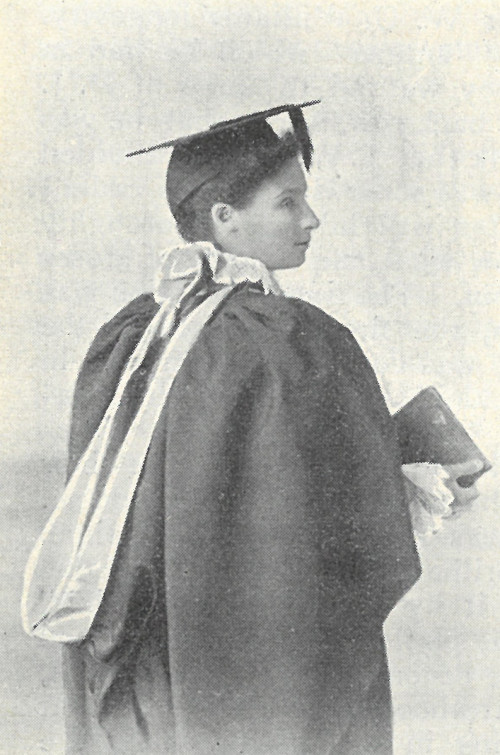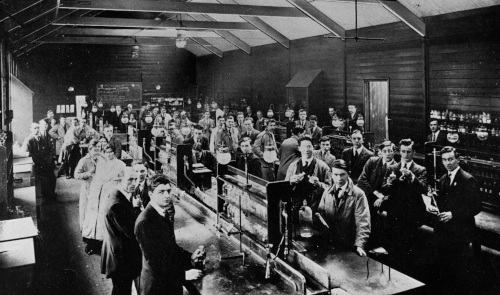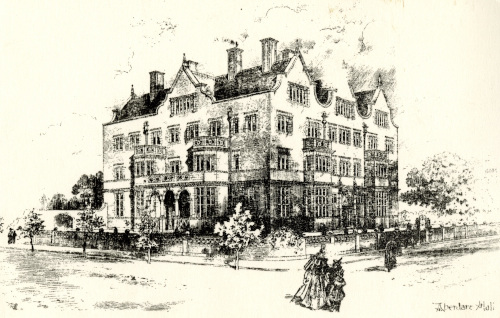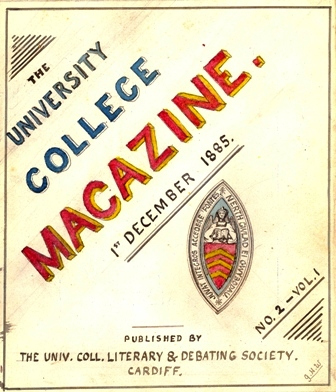Under our new Labs umbrella, we have started a new project, ‘Images and Machine Learning’ it has three distinct and related strands.
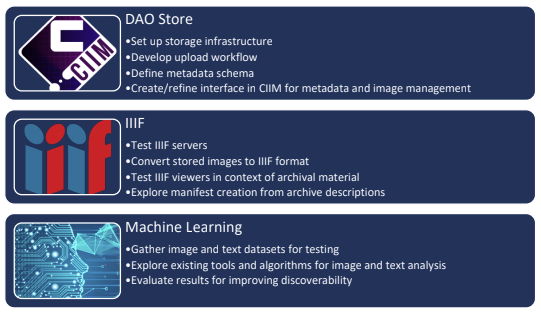
We will be working on these themes with ten participants, who already contribute to the Archives Hub, and who have expressed an interest in one or more of these strands: Cardiff University, Bangor University, Brighton Design Archives at the University of Brighton, Queens University Belfast, the University of Hull, the Borthwick Institute for Archives at the University of York, the Geological Society, the Paul Mellon Centre, Lambeth Palace (Church of England) and Lloyds Bank.
This project is not about pre-selecting participants or content that meet any kind of criteria. The point is to work with a whole variety of descriptions and images, and not in any sense to ‘cherry pick’ descriptions or images in order to make our lives easier. We want a realistic sense of what is required to implement digital storage and IIIF display, and we want to see how machine learning tools work with a range of content. Some of the participants will be able to dedicate more time to the project, others will have very little time, some will have technical experience, others won’t. A successful implementation that runs beyond our project and into service will need to fit in with our contributors needs and limitations. It is problematic to run a project that asks for unrealistic amounts of time from people that will not be achievable long-term, as trying to turn a project into a service is not likely to work.
DAO Store
Over the years we have been asked a number of times about hosting content for our contributors. Whilst there are already options available for hosting, there are issues of cost, technical support, fit for purpose-ness, trust and security for archives that are not necessarily easily met.
Jisc can potentially provide a digital object store that is relatively inexpensive, integrated with the current Archives Hub tools and interfaces, and designed specifically to meet our own contributors’ requirements. In order to explore this proposal, we are going to invest some resource into modifying our current administrative interface, the CIIM, to enable the ingest of digital content.
We spent some time looking at the feasibility of integrating an archival digital object store with the current Jisc Preservation Service. However, for various reasons this did not prove to be a practical solution. One of the main issues is the particular nature of archives as hierarchical multi-level collections. Archival metadata has its own particular requirements. The CIIM is already set up to work with EAD descriptions and by using the CIIM we have full control over the metadata so that we can design it to meet the needs of archives. It also allows us to more easily think about enabling IIIF (see below).
The idea is that contributors use the CIIM to upload content and attach metadata. They can then organise and search their content, and publish it, in order to give it web address URIs that can be added to their archival descriptions – both in the Archives Hub and elsewhere.
It should be noted that this store is not designed to be a preservation solution. As said, Jisc already provides this service, and there are many other services available. This is a store for access and use, and for providing IIIF enabled content.
The metadata fields have not yet been finalised, but we have a working proposal and some thoughts about each field.
| Title | mandatory? individual vs batch? |
| Dates | preferably structured, options for approx. and not dated. |
| Licence | possibly a URI. option to add institution’s rights statement. |
| Resource type | controlled list. values to be determined with participants. could upload a thesaurus. could try ML to identify type. |
| Keywords | free text |
| Tagging | enable digital objects to be grouped e.g by topic or e.g. ‘to do’ to indicate work is required |
| Status | unpublished/published. May refer to IIIF enabled. |
| URL | unique URI of image (at individual level) |
We need to think about the workflow and user interface. The images would be uploaded and not published by default, so that they would only be available to the DAO Store user at that point. On publication, they would be available at a designated URL. Would we then give the option to re-size? Would we set a maximum size? How would this fit in with IIIF and the preference for images of a higher resolution? We will certainly need to think about how to handle low resolution images.
International Image Interoperability Framework
IIIF is a framework that enables images to be viewed in any IIIF viewer. Typically, they can be sequenced, such as for a book, and they are zoomable to a very high resolution. At the heart of IIIF is the principle that organisations expose images over the web in a way that allows researchers to use images from anywhere, using any platform that speaks IIIF. This means a researcher can group images for their own research purposes, and very easily compare them. IIIF promotes the idea of fully open digital content, and works best with high resolution images.
There are a number of demos here: https://matienzo.org/iiif-archives-demo/
And here is a demo provided by Project Mirador: http://projectmirador.org/demo/
An example from the University of Cambridge: https://cudl.lib.cam.ac.uk/view/MS-RGO-00014-00051/358
And one from the University of Manchester: https://www.digitalcollections.manchester.ac.uk/collections/ruskin/1
There are very good reasons for the Archives Hub to get involved in IIIF, but there are challenges being an aggregator that individual institutions don’t face, or at least not to the same degree. We won’t know what digital content we will receive, so we have to think about how to work with images of varying resolutions. Our contributors will have different preferences for the interface and functionality. On the plus side, we are a large and established service, with technical expertise and good relationships with our contributors. We can potentially help smaller and less well-resourced institutions into this world. In addition, we are well positioned to establish a community of use, to share experiences and challenges.
One thing that we are very convinced by: IIIF is a really effective way to surface digital content and it is an enormous boon to researchers. So, it makes total sense for us to move into this area. With this in mind, Jisc has become a member of the IIIF Consortium, and we aim to take advantage of the knowledge and experience within the community – and to contribute to it.
Machine Learning
This is a huge area, and it can feel rather daunting. It is also very complicated, and we are under no illusions that it will be a long road, probably with plenty of blind alleys. It is very exciting, but not without big challenges.
It seems as if ML is getting a bad reputation lately, with the idea that algorithms make decisions that are often unfair or unjust, or that are clearly biased. But the main issue lies with the data. ML is about machines learning from data, and if the data is inadequate, biased, or suspect in some way, then the outcomes are not likely to be good. ML offers us a big opportunity to analyse our data. It can help us surface bias and problematic cataloguing.
We want to take the descriptions and images that our participants provide and see what we can do with ML tools. Obviously we won’t do anything that affects the data without consulting with our contributors. But it is best with ML to have a large amount of data, and so this is an area where an aggregator has an advantage.
This area is truly exploratory. We are not aiming for anything other than the broad idea of improved discoverability. We will see if ML can help identify entities, such as people, places and concepts. But we are also open to looking at the results of ML and thinking about how we might benefit from them. We may conclude that ML only has limited use for us – at least, as it stands now. But it is changing all the time, and becoming more sophisticated. It is something that will only grow and become more embedded within cultural heritage.
Over the next several months we will be blogging about the project, and we would be very pleased to receive feedback and thoughts. We will also be holding some webinar sessions. These will be advertised to contributors via our contributors list, and advertised on the JiscMail archives-nra list.

